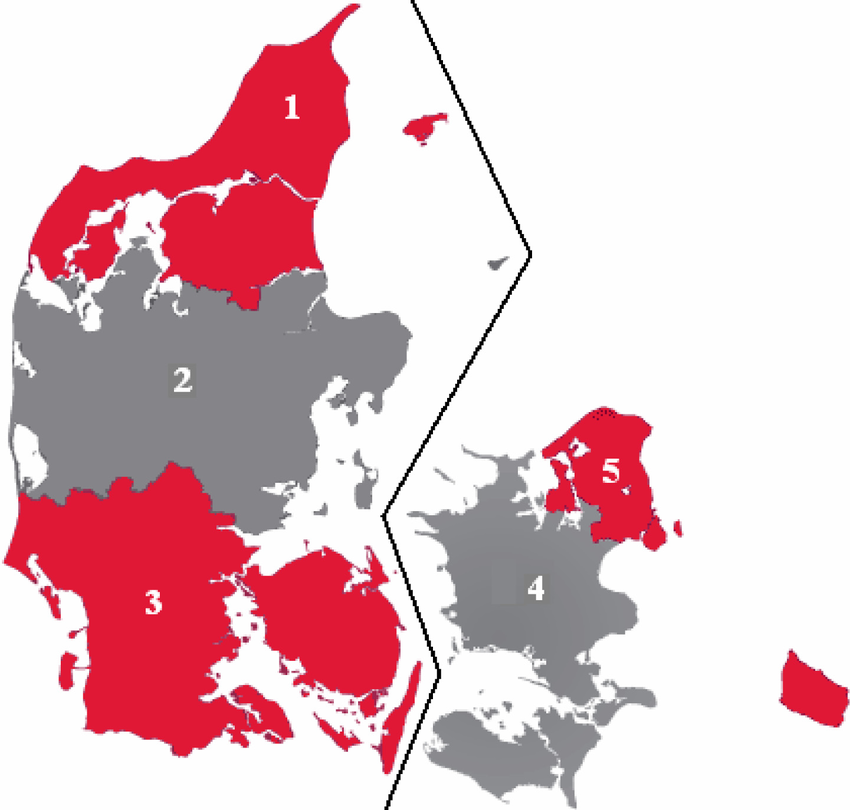In a recent preliminary ruling (C-737/22) the CJEU is on the basis of general principles of equal treatment and transparency essentially dealing with what amending of bids and negotiating means. The ruling concerned an open tender launched by SKI, a central purchasing body established by Danish central government and municipalities, to conclude a framework agreement for provision of library materials and associated services. The award criterion was the lowest price.
The contract for tender was divided into numerous lots, where lots 1 and 2, concerned Danish books and sheet music for Western and Eastern Denmark respectively. The tender specifications connected these two lots in what could be called an East/West Model. The model is intended to take account of the particular market conditions with only few suppliers. The division into Lots 1 and 2 aims at maintaining competition relating to Danish books and sheet music by designating one supplier in Eastern Denmark and one in Western Denmark and with identical prices. The intention is to ensure effective competition and identical prices for SKI customers irrespective of location.

The East/West model works in the following manner: Lots 1 and 2 are in the technical specifications nailed down as interdependent in the sense that a bid submitted for one lot is automatically deemed to have been submitted for both lots. The bidder with the highest rated bid (i.e. the winner) will be awarded the contract for Lot 2 (Western Denmark), which is the larger lot. The bidder with the second highest rated bid will be awarded the contract for Lot 1 (Eastern Denmark).
An important condition for award is that bidder accepts to supply to customers at exactly the same prices as the bidder with the highest rated bid. If the second highest rated bidder does not agree to those conditions then the opportunity will be offered to the bidder with third highest rated bid and so on. Where none of the bidders are interested, the contract for Lot 1 will be awarded to the winner of Lot 2, i.e. the bidder with the highest rated bid.
The lawfulness of the East/West model was challenged in a complaint to the Danish Public Procurement Complaints Board. The Board found that the model contravened the ban on negotiations in open procedures. Negotiation between contracting authorities and bidders – understood in the wide sense as any dialogue that goes beyond mere clarifications – is only allowed in EU tender procedures specifically designed to make room for negotiation as a phase in the procedure. To allow negotiations in open procedures would fly in the face of basic EU principles of transparency and equal treatment, risking an undermining of the entire competitive process.
The Board considered that the technical specifications of the model essentially allowed bidders other than the winner to modify their bids when given the opportunity by the contracting authority (SKI). This was considered to be akin to a negotiation. Admittedly, the “negotiation” could only lead to a decrease of the price of the bid but the bidder would in return be awarded a contract that was otherwise not obtainable via the initial bid. The fact that the tender specifications did describe the functioning of the model in detail and that the scope for negotiation was reduced to “take -it or leave it” could not in the opinion of the Board lead to another result.
The decision of the Board was appealed to the Danish Court of Appeals, which then essentially asked the CJEU whether the principles of transparency and equal treatment and the consequent ban on negotiations preclude application of the East/West model.
The Court makes the point, that the model does not allow any changing of prices in bids once bids have been submitted. Furthermore, that it is these prices that determine the ranking of the bids in the model and that the lowest price to be applied in the model is the one identified as the lowest in the ranking. The Court goes on to argue that it is also this ranking that determines which of the other bidders that are offered Lot 2 and in which order and that the entire process is specified in advance in the tender specifications.
The Court concludes that the automatics of the East/West model excludes any amending of bids . The point is made that “..No tenderer has the possibility of changing, by amending its tender or by any negotiation, its position in the ranking or the price at which the contract (…) will be concluded.” The Court did on this basis rule as follows:
Article 18(1) of Directive 2014/24/EU of the European Parliament and of the Council of 26 February 2014 on public procurement and repealing Directive 2004/18/EC must be interpreted as meaning that the principles of equal treatment and transparency set out in that provision do not preclude, in a procedure for the award of a public contract divided into lots, the tenderer which has submitted the second most economically advantageous tender from being awarded, in accordance with the terms set out in the procurement documents, a lot on the condition that that tenderer accepts to deliver the supplies and perform the services relating to that lot at the same price as that offered by the tenderer which submitted the most economically advantageous tender and which has therefore been awarded another, larger lot of that contract.
Comments
The East/West model deviates from the usual tender process, where only the bidder with the lowest bid is awarded the contracts. The model effectively allows Lot 1 to be awarded to the second best bidder, and in addition at a price different from the one indicated in his already submitted bid. The ruling does in this manner inevitably introduce uncertainty on a very important part of the procurement process, namely application of award criteria.
As regards the question whether the bid had actually been changed, the Court seems to consider the technical specifications as a standard modification to be read into any bids concerning Lot 1 and 2. In other words, it is from the outset part of the bids that the price will be changed if a lower rated bidders accepts the option of having Lot 1 awarded.
For the East/West model to work, it needs to be initiated by the contracting authority by means of the offer to the second rated bidder. On the issue of negotiation, the question could be raised whether this offer and the subsequent accept/refusal of the bidder does not in itself actually constitute negotiation. Seen in this perspective the bid could be considered changed not as a result of a standard modification but as a result of the offer initiated by the procuring authority and triggering the standard modification.
The case raise other in fact more essential questions. Firstly, whether there can be more winners than one. Is it in fact possible to award Lot 2 to a lower rated bidder? Furthermore, by allowing the second best bidder a first choice to accept the lower price, this bidder is in fact being given a preferential position compared to other bidders. Such preference can hardly be justified by the mere fact of the bidder being second best. Especially not when price is the sole award criterion. The East/West model could therefore be problematic in relation to the principle of equal treatment.
